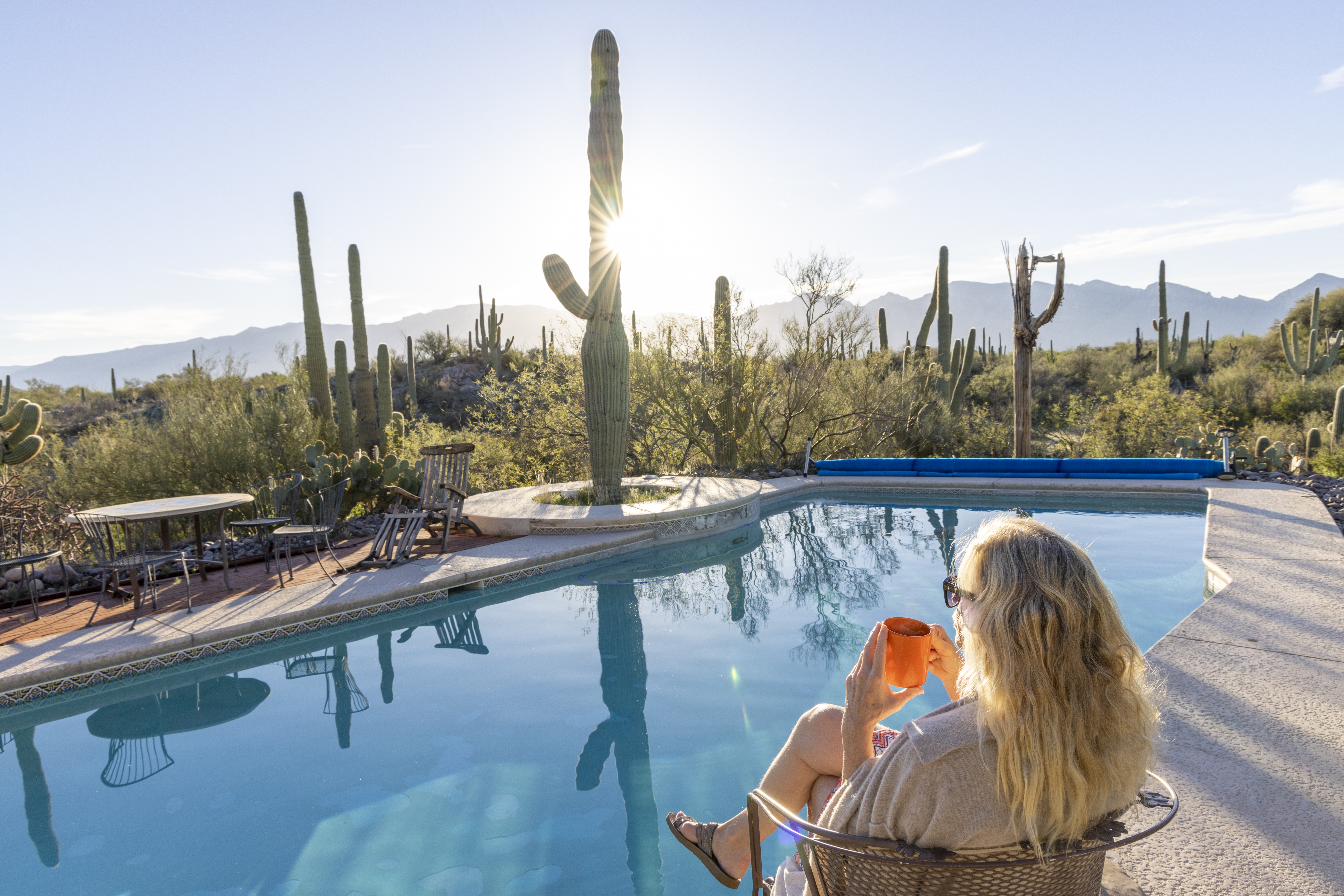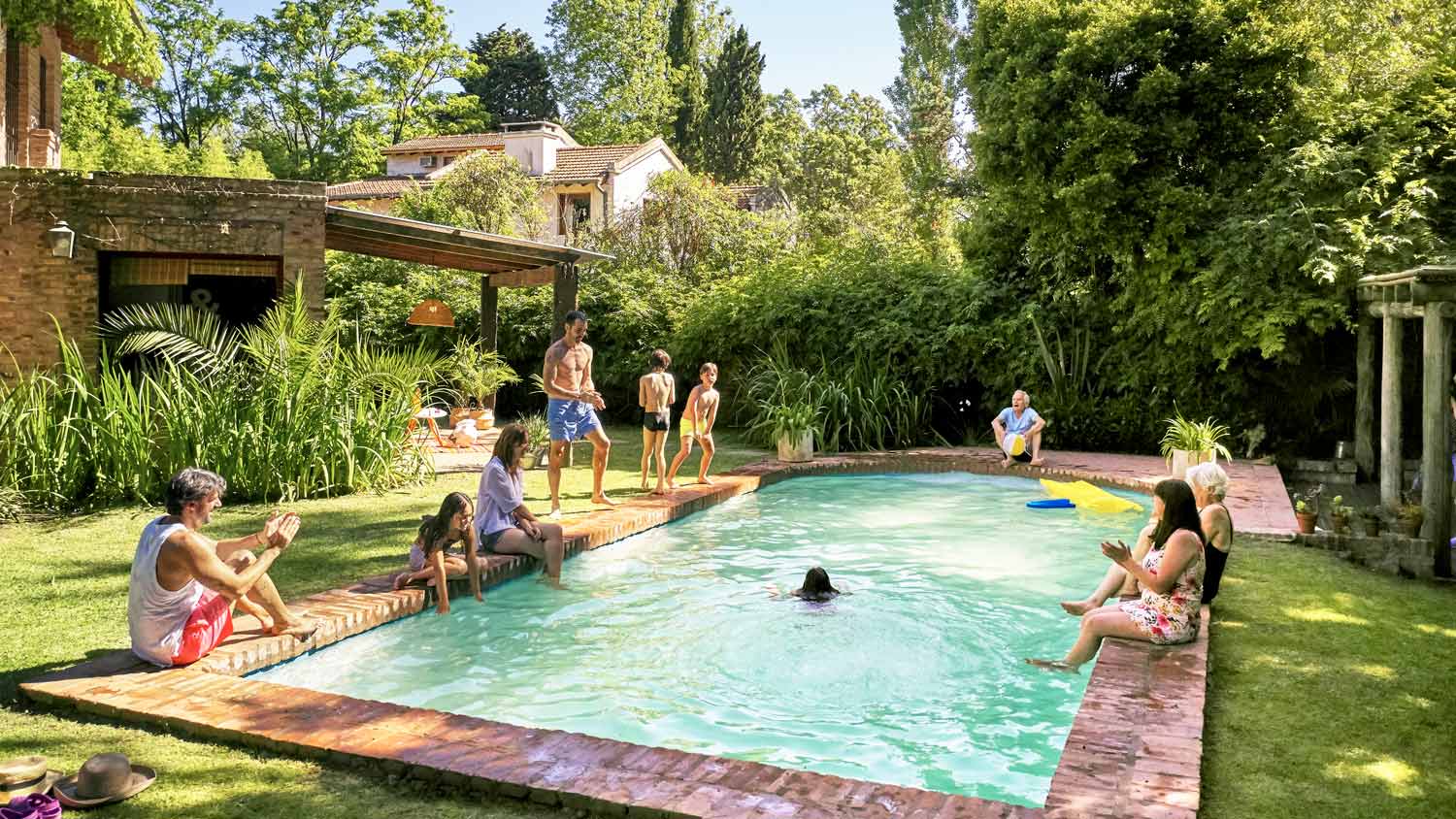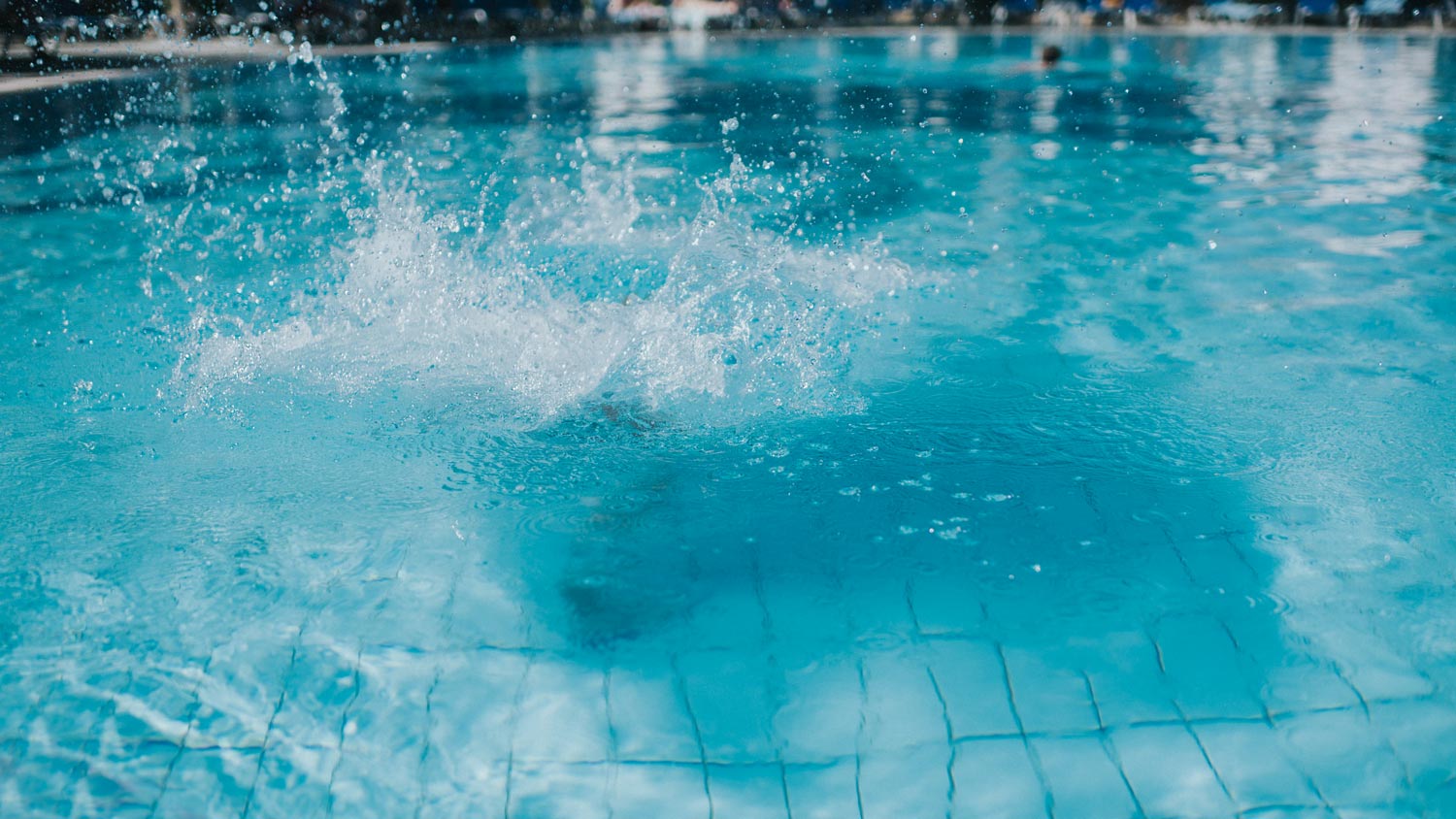
A pool can help you take advantage of sunny Phoenix days. Here are the factors that make up the in-ground pool costs in Phoenix, Arizona.
Keep your swimming pool crystal-clear by adding this weekly checklist to your swim routine


There’s nothing like taking a dip in your own pool on a hot day, but if your pool is looking a little green around the edges, you likely need to step up your maintenance routine. Follow this weekly pool maintenance checklist to avoid common pool maintenance mistakes and make sure your pool is swim-ready whenever you are.
From skimming debris to a routine shock treatment, find out what you need to do to keep your pool water clear and clean.
Pull out your pool’s skimmer basket (or baskets) and be sure to empty it of debris. Take a minute to clean it with your garden hose to blast off anything that sticks.
Use your pool skimmer to remove floating debris like leaves and bugs before they sink to the bottom. Regular skimming makes cleaning up, including vacuuming, more manageable.
Use a pool scrubber to brush off any sediment that builds up, especially on pool walls.
Vacuum your pool to remove any dirt and debris that has settled at the bottom, especially after scrubbing.
Use automatic cleaners like vacuum sweeps to simplify maintenance and keep the pool looking great with less manual effort. While DIY maintenance can save money, having a relationship with a professional service—even for occasional deep cleaning and equipment checks—is valuable.
Your pool will have a mark on either the tile line or a skimmer line to denote the optimal water level.
Here are some best practices:
For most in-ground pools, you want your water level to be halfway up your skimmer plate.
If you have too much water, due to heavy rainfall, for example, you’ll need to pump it out.
If you have too little water, add pool water to meet the line.
If the water level is significantly low, check for pool leaks by doing a visual check, bucket test, and dye test. A pool professional can help you identify and repair a leak.

Chemistry is the key to a healthy pool, but the good news is you don’t need a degree to keep your pool’s chemistry in check. Test your water to check the chemical balance every week using a test kit. (Some pool owners do this multiple times a week.)
You’ll want to maintain the PH balance, alkalinity, and calcium hardness of your pool as follows:
PH from 7.2 to 7.6
Alkalinity from 80 to 150 ppm
Calcium hardness between 175 to 275 ppm
The next step on your weekly maintenance checklist is to add swimming pool chlorine. Your chlorine levels should be between 1 and 3 ppm.
Test your chlorine levels with a home test kit (available at any pool supply store or online)
Add chlorine tablets to your chlorinator
Add a high dose of chemicals to destroy any bacteria—known as shocking—at least once a month.
Some pool owners prefer to do it weekly or every other week.
It’s always a good idea to shock your pool after a pool party or a period of heavy use to remove body oils, sweat, and urine from the water.
You’ll also want to shock your pool after heavy rainfall, as it will help filter out any contaminants that could have washed into the water.
Depending on the size of your pool, the type of pool you have, and how much sunlight it gets, you may need to apply an algaecide on a weekly or bi-weekly basis.
In addition, you should use an algaecide after shocking your pool.
After shocking your pool, wait until your pool’s chlorine levels have returned to the 1 to 3 ppm balance before applying any algaecide.
Higher chlorine levels can counteract the effects of the algaecide.
Be sure to run the pump for at least 24 hours following the algae treatment.

Follow your manufacturer’s guidelines for the application of other pool chemicals, including rust and scale removers and water clarifiers. Create a weekly pool chemical schedule to keep yourself on track. Keep in mind that saltwater pool maintenance also includes maintaining the pool’s salinity level alongside chemical levels.
Check your filter pressure and backwash it with a chemical filter cleaner and water as needed. Read the manufacturer’s instructions, looking for suggested filter cleaning, maintenance, and replacement instructions and schedules. Different filter types may need more or less cleaning depending on how quickly they fill and how much the pool is used. Keep in mind that pool filters last two to 10 years, depending on the type of filter and how well they are maintained.
The pool jets should be aimed toward the bottom of the pool at a 45-degree angle to maintain adequate circulation. Proper circulation distributes chemicals and keeps the pool water safe and clean. Put your hand in front of each jet to ensure they’re working at full pressure. If the flow feels weak, there could be an issue with the plumbing, filter, or pool pump.
You might also have issues if bubbles are coming from the jets. Bubbles can indicate air leaks in suction lines, pool pump problems, or filtration issues.
Scrub, sweep, and power-wash the area around your pool to keep swimmers from tracking in any mud or debris.
A pool cover keeps debris out of the pool and helps prevent water loss from evaporation. Check the pool cover for cracks, tears, holes, sun damage, and damage from fallen debris. Staying on top of cover repairs can help you save on pool maintenance costs. Depending on the type of cover, you can fix some types of damage yourself and extend the life of the cover while keeping the pool protected.
Many of the above maintenance tasks require some supplies that you’ll want to keep on hand throughout the swimming season to use multiple times a week. The following is a basic list of what to keep stocked:
Test kits for checking the chemical balance
Chlorine tablets
Chemicals for shocking the pool
Algaecide
Rust and scale removers
Water clarifiers
Chemical filter cleaner
Check the manufacturer’s guidelines for any other supplies you might need to keep your pool sparkling.
Pool maintenance costs vary by the pool size, location, use frequency, and several other factors. You can save on pool maintenance costs if you do some of the work, like checking the water and chemical levels and cleaning the pool deck. You’ll spend about $100 per year on chemicals, and you’ll still need at least one maintenance check from a professional every year, which costs between $150 and $200.
Pool maintenance requires consistency to maintain a safe pool environment. If you’ll have difficulty keeping up with it, a local pool services pro charges an average of $960 to $1,800 per year. Some pros offer packages with different maintenance levels, so you can balance the cost with the amount of work you can do yourself.
Needed my house to be cleaned before putting it up for sale. Called and spoke to Javier, which was very helpful and explained really well what they offered. When everything was done. My wife and I were very satisfied with the services we received. I have recommended them to several friends...
We had Atlas construction do our driveway in 2023 it turned out amazing and it was fast turn around which we appreciated! We hired them again in ‘24 to do a new deck around our pool! Once again couldn’t be more pleased with their team and quality of their work! Would highly recommend Thanks...
Great team and had us finished in time. Thank you Carlos and Issac
I had a great experience with Zenkai Restore. They came in quickly to address the water damage in my home, setting up fans and dehumidifiers to dry everything out. They also cut out the damaged drywall and thoroughly sanitized the framing. To top it off, they put up a solid airtight...
Our home now has a brand-new garage door installed by their crew. The entire procedure went without a hitch. Because of the teams professionalism, the installation was completed correctly. We are pleased with the way our new door works and it functions flawlessly.
I recently hired Handyman Connection of Phoenix to replace my kitchen and bathroom sink faucets and handle some general plumbing improvements. Abel was punctual, professional, and efficient. They explained the process clearly and ensured everything was functioning perfectly. Their workmanship...
Cody is the best! He takes such great care of all of my real estate clients, as well as my family. He also installed a home filtration system for me at my house and we are very happy with it. He was fast, efficient and reasonably priced. He is extremely communicative and responsive, always....
It was beyond easy to get a new water heater installed. Best pricing I was able to find. Fast install. Kevin was solid!
Responses to questions and requests were timely and helpful. Employees were pleasant and had positive attitudes.
They went above and beyond! Extremely efficient, and great communication.
From average costs to expert advice, get all the answers you need to get your job done.

A pool can help you take advantage of sunny Phoenix days. Here are the factors that make up the in-ground pool costs in Phoenix, Arizona.

Discover the average cost of an automatic pool cover, key price factors, and expert tips to help you budget for installation or replacement.

Pools are a staple in Phoenix, and when it’s time to maintain or upgrade them, it’s essential to budget accordingly for pool remodeling costs. Here’s how it breaks down.

If you’re looking to get your backyard summer-ready, use this guide to learn pool opening costs, budget appropriately, and how to save money.

If your water has high calcium hardness, it's important to learn how to lower calcium hardness in your pool water to avoid corrosion that can harm your pool's plumbing.

Discover the cost to install a solar pool heater, including average prices, key cost factors, and tips to save on your project.